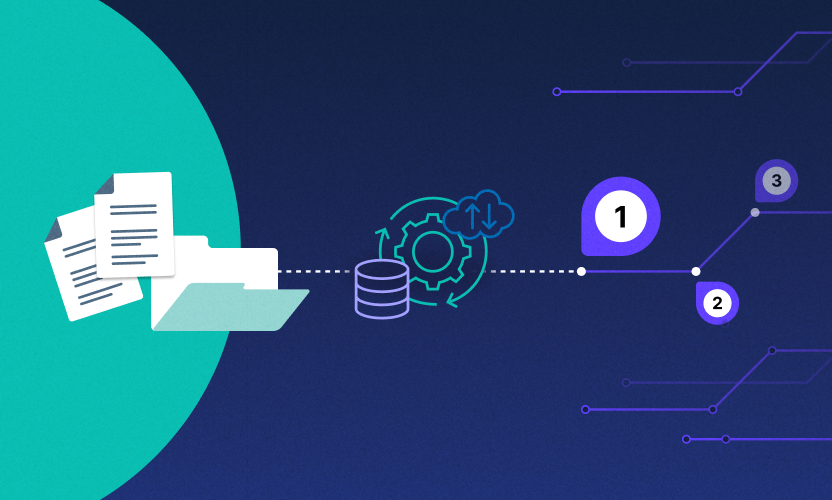
Report: Data Explosion in AEC Reveals Major Management Challenges
Egnyte's newly released AEC Data Insights Report reveals architecture, engineering, and construction (AEC) companies are storing a rapidly growing amount of data. As a result, firms are struggling to store and manage their information effectively, especially as the AEC industry faces increasing regulation and compliance requirements.
At Egnyte, we have more than 3,000 AEC customers storing, securing, and sharing petabytes of data on our platform. With this foundation, we have unique insights into how the industry is adapting to an ever-changing landscape. For the AEC Data Insights Report, we analyzed how AEC customers utilize the platform and compiled that information into a comprehensive report that shows how the industry—and disciplines within AEC—is adapting to this data growth.
In this blog, we’ll highlight some of the key findings from the report and provide practical advice to set AEC firms on the path to better data management.
Trends Point to a Need to Tame the Data Tiger
Many AEC firms have accelerated their migration to the cloud in the wake of the pandemic. These companies are primarily focused on effective communication between employees working from home and teams working on project sites. These shifts have helped companies adapt to the new ways of work, but they also introduce management challenges.
The following trends were identified in the AEC Data Insights Report. They raise some red flags that tell us we need to start taming this data tiger:
- Data Volume Growth is Explosive. Egnyte's AEC customers have, on average, nearly quadrupled their data storage in recent years—increasing from 0.9 TB in 2017 to 3.5 TB in 2021.
- Data Sprawl is a Growing Challenge. The number of files used to store that data grew to 1.17 million—a 23.4% compound annual growth rate over four years. This proliferation leads to data sprawl, which only compounds data management challenges.
- Usage Patterns Vary Widely Across Disciplines. An AEC worker’s role has a direct impact on how they interact with files, as well as the types of files they use. For example, General Contractors share the most files, while Owners access files the most. As another example, images make up a much larger share of Architects’ storage (29.1%) than Specialty Contractors’ share of storage (14.5%).
- Data Security Issues Vary by Company Size and Discipline. With more data comes more risk. Egnyte flagged a staggering growth in "high-severity" issues—from 3,793 in Q4 2020 to 16,122 in Q4 2021, a 325% increase across AEC domains. An issue is labeled high severity when it represents the possible loss or exposure of confidential information or other adverse events that could severely impact the business.
Take Control of your Data to Boost Your Business
These trends indicate the need for AEC firms to better harness their information. If you operate one of these businesses, take the following steps to help increase productivity, reduce storage costs, and meet compliance requirements.
1. Align your data management plan with business objectives
Create a data management plan that covers your organization's overall business objectives, the data required to meet those business objectives, the means and methods for making progress, and a schedule for periodic reviews and updates.
2. Document organizational and project data management procedures
Include all necessary steps to execute organizational and project processes from start to finish. Processes may include policies, forms, checklists, tutorials, and screenshots.
3. Find the right platform to deploy the data management plan
Two critical considerations of any AEC company looking at data management tools and platforms include:
- Storage. Understand the volume and velocity of the incoming office and project-generated data as well as the use and accessibility requirements to determine which storage best fits your data management objectives—e.g., data warehouses, data lakes, on-premises, or in the cloud.
- Automation. With large volumes of project data, automation saves administrative time and associated costs. It also reduces the likelihood of human error.
4. Establish governance
AEC firms need ways to securely analyze and process large amounts of data. Critical areas of concern include:
- Security. Put systems and processes into place to protect office and project-generated data and to comply with corporate, industry, and government regulations.
- Access. As part of your security and data management protocols, include details about how credentials are issued—and replaced, if lost—and how permissions are granted to provide fine-grained access controls. Also, consider providing directions about accessing data across multiple, disparate sources.
- Data Quality. Prescriptive data quality measures will increase productivity, reduce data exploration time, and mitigate the risk of internal and external threats.
5. Train and deploy
A critical component of any data management plan is to provide your team with the knowledge and skills they need to manage organizational and project data effectively. In addition to making sure IT follows best practices, try to give your end users at least a rudimentary level understanding of what they can do to maintain proper cyber hygiene.
Join Us for the 2022 AEC Data Insight Report Webinar
AEC firms must establish best practices in data management to maintain a single version of the truth for all files. They also have to align those practices with business goals if they want to succeed.
To help you learn more about how to do just that, Egnyte will host a webinar on Thursday, August 18 to review the insights gleaned from analyzing the aggregate data from Egnyte's AEC customers. Company leaders will also discuss best practices for harnessing the rapid growth of organizational data.






